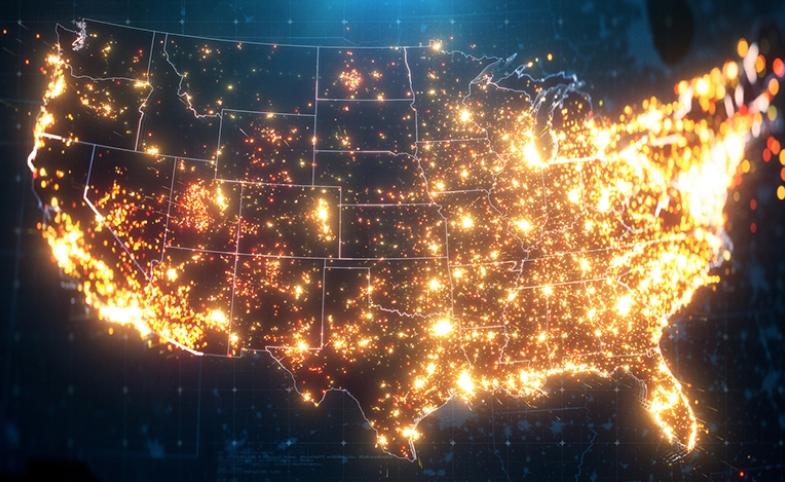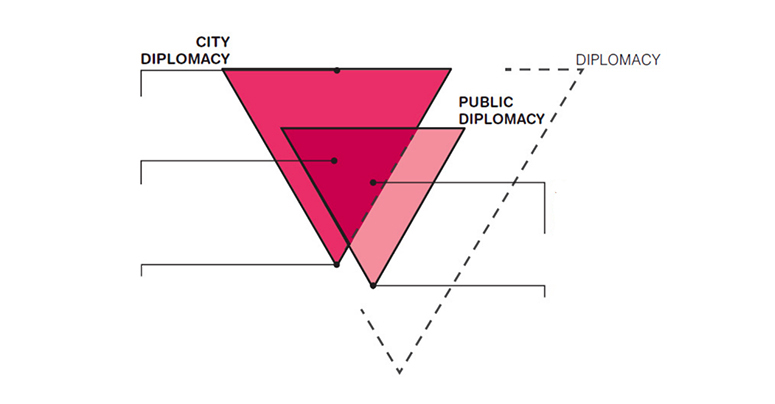As nations are preparing their policies and governance strategies for the post-COVID phase, cities rely on their international affairs to manage the growing linkages between urban and international policies. As the fourth...
KEEP READINGThe CPD Blog is intended to stimulate dialog among scholars and practitioners from around the world in the public diplomacy sphere. The opinions represented here are the authors' own and do not necessarily reflect CPD's views. For blogger guidelines, click here.

Dynamics between City Diplomacy and Public Diplomacy
Note from the CPD Blog Manager: This piece is based on the author’s article, “Understanding the Dynamics between U.S. City Diplomacy and Public Diplomacy,” published in the Summer 2022 edition of the Journal of Public Diplomacy.
What is the relationship between city diplomacy and public diplomacy in the United States? While this question is often raised among scholars and practitioners of public diplomacy, a concrete and systematic response to it seems difficult to locate.
In a recent paper published by the Journal of Public Diplomacy (JPD), I address the question by relying on earlier research hinged on design principles. Using multidimensional scaling and correspondence analysis, I first visualize the convergence and divergence between the functions of public diplomacy and city diplomacy in the United States and second, uncover the policy intervention space that could guide policies for making U.S. city diplomacy and public diplomacy more strategically aligned.
The “City Diplomacy-Public Diplomacy Diagram” introduced in the paper (below) is uniquely designed to assess public policies associated with the integration of local governments into the broader system of U.S. diplomacy through public diplomacy. Because of the design principles applied, the visualization itself becomes an analytical tool to verify consistency and relevance. Additionally, visualization that shows the current scope of city diplomacy, as practiced by U.S. cities and compared to the expectations of the U.S. Department of State at the national level, allows policymakers to quickly, yet comprehensively, examine the system and identify policy intervention spaces thanks to visual cues such as pattern, color and balance. Overall, the combination of the approaches facilitates new ways of analyzing the relationships between system elements, a methodological approach that I have developed in recent years. This approach helps create a shared vocabulary with which to pursue future research and policy analysis.

A sketch of the City Diplomacy-Public Diplomacy Diagram
During the Cold War, cities were recognized for their ability to embrace a sense of moral good, to develop strong relations and to be helpful in conflict resolution. This was mainly achieved through twinning agreements and Sister Cities International. The work of city administrations thus complemented wider state-level public diplomacy projects by facilitating people-to-people exchanges and encouraging peacebuilding and peacekeeping. Public diplomacy, at its core, is about relationships. Creating and maintaining relationships is also the strength of city diplomacy. This marks the essential area of convergence between city diplomacy and public diplomacy. The divergence becomes more visible when considering which 'policies and actions' are advanced and how. The JPD paper explains the most recognized area of overlap between city diplomacy and public diplomacy; the most controversial dynamic between city diplomacy and public diplomacy; and the most strategic collaboration opportunities for city diplomacy and public diplomacy.
If cities are to promote and promulgate U.S. foreign policies as they host international exchanges, it is only reasonable that through a closed feedback loop, they can inform the policies as well: the policies that they must represent.
There is overlap between city diplomacy and public diplomacy, especially when it comes to cultural diplomacy, international exchange and public diplomacy’s role in informing and engaging the American people about world affairs and foreign policy. While the natures of city diplomacy and public diplomacy are such that they can inform both national diplomacy and foreign policy through closed feedback loops, they are regardless bound by diplomacy at the national level. To enhance its international image and influence, the United States needs to invite information gathered through international exchange programs and through people-to-people exchanges and digital and citizen diplomacy and use them to inform policies. These types of programming and exchanges happen at the local level. Hence, cities can enhance U.S. attraction power by ensuring that communication with international publics is two-way and that they can see that their relationship with U.S. counterparts can impact U.S. foreign policies.
Given that cities’ international engagement is closely tied to the country’s national security goals and overarching foreign policies set by the federal government, federal policies need to catch up with the practice to ensure that the definition, scope and structure designed for this practice is such that it enhances U.S. diplomatic and foreign policy objectives by being more inclusive of sub-national actors.
A city must decide on how it spends its resources and staff time on the tasks it delivers. So, providing more resources to a city office in charge of city diplomacy can certainly improve efficiency, synergy and effectiveness. Additionally, better use of data systematically in collaboration with the Department of State could be one way to create such efficiency. Further, as the JPD paper suggests, the shared challenges between the Department of State and city offices of international affairs are rooted in lack of public appreciation for noncoercive statecraft and international relationship-building. U.S. cities with international offices have identified the need to engage their constituents in city diplomacy initiatives to increase their appreciation and support for the international affairs work that the city does. Department of State officials also emphasize the need to elevate knowledge of and appreciation for diplomacy among American citizens.
This convergence of interest and shared need for a policy solution is a significant opportunity for policy development. The City Diplomacy-Public Diplomacy Diagram, which compares the key functions of each practice, draws attention to potential crossover opportunities that may have been overlooked, such as enhanced coordination with regards to international broadcasting or aid, collaboration and cooperation.
Ultimately, the diagram that I introduce in the JPD paper can inform future studies and the scope of the practices for city diplomacy and for public diplomacy.
Visit CPD's Online Library
Explore CPD's vast online database featuring the latest books, articles, speeches and information on international organizations dedicated to public diplomacy.
POPULAR ARTICLES
-
March 22
-
April 11
-
April 1
-
March 4
-
March 19
Join the Conversation
Interested in contributing to the CPD Blog? We welcome your posts. Read our guidelines and find out how you can submit blogs and photo essays >.













